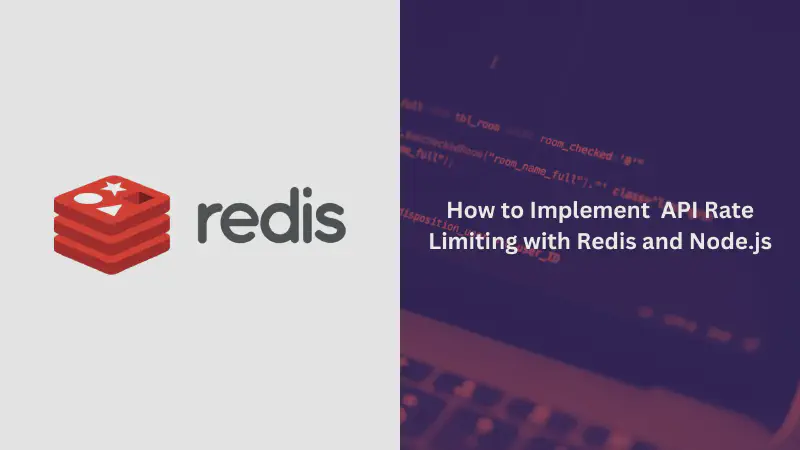In a previous article on API rate limiting with Node.js, we covered the basics of limiting requests to protect your server from abuse. Today, we’ll take it further by introducing Redis as a key element to manage limits across multiple instances in a high-traffic environment.
By leveraging Redis, a fast in-memory data store, you can ensure that your system remains efficient even as demand increases. In this guide, we’ll walk through how to integrate Redis with Node.js for effective and scalable API rate limiting.
Why Use Redis for Rate Limiting?
Redis provides a reliable solution for managing data across distributed servers, making it an excellent choice for API rate limiting. Key advantages include:
- Performance: As an in-memory database, Redis is extremely fast, handling thousands of operations per second.
- Consistency Across Servers: Redis allows your application to enforce the same rate limits across multiple instances.
- Automatic Expiry: Keys in Redis can be set to expire automatically, which helps in resetting the counters for rate limiting purposes.
Setting Up Redis and Node.js
Before we proceed with the implementation, make sure Redis is installed either locally or via a cloud provider. You can checkout another tutorial about how to install Redis. The following npm packages will be necessary for this setup:
- express - Web framework for Node.js.
- redis - To interface with Redis from Node.js.
- express-rate-limit - Middleware for limiting repeated requests.
- rate-limit-redis - Allows Redis to be used as a store for rate limit data.
To install these dependencies, run the following command:
|
|
Implementing Rate Limiting in Node.js with Redis
The following example demonstrates how to set up a rate-limiting for API using Express and Redis.
|
|
Code Breakdown
-
Redis Connection: The
redis.createClient()function connects your Node.js app to the Redis server. Make sure Redis is running before starting your application. -
Rate Limiting Middleware: The
express-rate-limitmiddleware tracks the number of requests made by each client and restricts access if they exceed the limit (in this case, 5 requests per minute). Redis is used as the backend store for this data, ensuring consistent limits across multiple application instances. -
API Routes: In this example, the rate limiter is applied to all routes under
/api/. If a user sends more than 5 requests in a minute, they will receive an error message advising them to wait. -
Error Handling: It’s important to handle Redis connection errors gracefully. The
redisClient.on('error', ...)block ensures that any issues with Redis are logged.
Monitoring and Best Practices
To ensure your rate limiter is functioning correctly, monitor your Redis keys and check how they’re expiring as requests are made. Here are a few suggestions for efficient use of Redis with rate limiting:
- Tuning Limits: Adjust the rate limits based on your application’s requirements. For instance, some routes may need stricter limits than others.
- Monitoring Redis Usage: Keep an eye on Redis memory usage and adjust configurations to handle higher traffic efficiently.
- Distributed Architecture: Redis allows multiple instances of your Node.js app to share the same rate limit data, ensuring consistency even as your system scales.
Conclusion
Integrating Redis into your rate-limiting strategy with Node.js provides a powerful way to manage API traffic across a distributed system. By following the steps in this guide, you can protect your application from abuse while maintaining performance.
For more insights and tutorials, visit CodeNoun and learn how to build scalable Node.js applications efficiently.
Related Article
- How to Integrate Meilisearch with Node.js for Fast and Relevant Search Results
- API Rate Limiting in Node.js | Enhance API Performance & Security
- Mastering Error Handling in Node.js: From Basics to Advanced Techniques
- How to Enable CORS in Express.js: A Step-by-Step Guide
- NPM vs Bun: Comparison of Package Managers for JavaScript Developers
